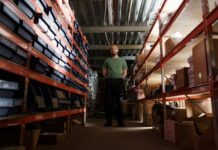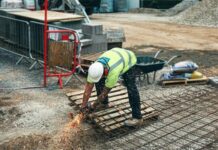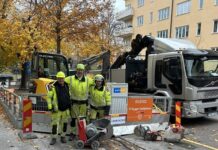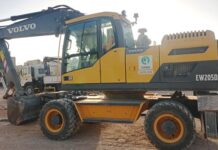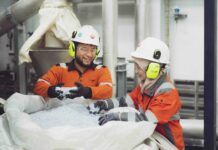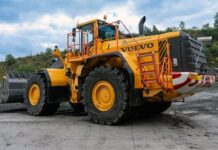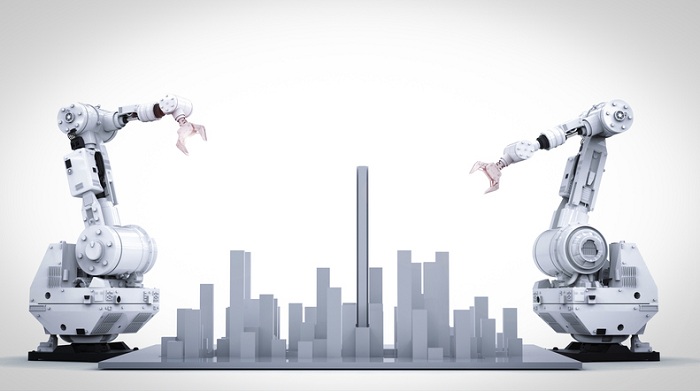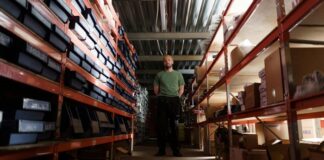The construction industry is vital to Europe’s economy, providing around 18 million direct jobs and contributing to about 9% of the EU’s GDP. Its importance as a sector has prompted research into making it even more competitive.
HEPHAESTUS PROJECT
The HEPHAESTUS project explores the innovative use of robots and autonomous systems in the construction industry.
European researchers have developed a cable-driven robot as part of the project. We went to see the prototype being tested in central Spain. Eight flexible cables allow the robot to rotate and move in all different directions around a 100 square meter mock-up of a three-storey building facade.
The system can hold several different tools – and is able to install and maintain heavy curtain walls. It can also hold around a ton of construction materials – and place them across large vertical workspaces with millimetric precision – in very challenging environments.
SYSTEM CHALLENGES
The system can be customised depending on the size of the facade where work will be carried out. For example, bigger construction surfaces need longer cables – and different geometric patterns.
Scientists working on the European research project say the main challenge is getting the cable tension right, as Mariola Rodriguez Mijangos, an industrial engineer at Tecnalia, explained:
“Once the tension is determined, we can design the rest of the installation. The cost of it depends on the tension. “The more tension cables require, the more expensive the whole installation will be.
“Our main challenge is to find the minimum tension but at the same time a sufficient amount in the cables for the robot to be able to fulfil its tasks,” she said.
SYSTEM ADVANTAGES
Scientists say the system will increase efficiency and execute tasks with great precision. As well as installing curtain walls, the robot can also fit solar panels and other construction surfaces.
It also has the capability to scan, paint, clean, and replace damaged parts of a building in need of repair. The construction industry is vital to Europe’s economy, providing around 18 million direct jobs and contributing to about 9% of the EU’s GDP.
Its importance as a sector has prompted research into making it even more competitive. In this episode of Futuris, Euronews finds out how.
HEPHAESTUS PROJECT
The HEPHAESTUS project explores the innovative use of robots and autonomous systems in the construction industry. European researchers have developed a cable-driven robot as part of the project. We went to see the prototype being tested in central Spain.
Eight flexible cables allow the robot to rotate and move in all different directions around a 100 square meter mock-up of a three-storey building facade.
The system can hold several different tools – and is able to install and maintain heavy curtain walls. It can also hold around a ton of construction materials – and place them across large vertical workspaces with millimetric precision – in very challenging environments.
SYSTEM CHALLENGES
The system can be customised depending on the size of the facade where work will be carried out. For example, bigger construction surfaces need longer cables – and different geometric patterns.
Scientists working on the European research project say the main challenge is getting the cable tension right, as Mariola Rodriguez Mijangos, an industrial engineer at Tecnalia, explained:
“Once the tension is determined, we can design the rest of the installation. The cost of it depends on the tension. “The more tension cables require, the more expensive the whole installation will be.
“Our main challenge is to find the minimum tension but at the same time a sufficient amount in the cables for the robot to be able to fulfil its tasks,” she said.
SYSTEM ADVANTAGES
Scientists say the system will increase efficiency and execute tasks with great precision. As well as installing curtain walls, the robot can also fit solar panels and other construction surfaces.
It also has the capability to scan, paint, clean, and replace damaged parts of a building in need of repair. “From our point of view as a construction company, this system has two advantages – one is the effective reduction of installation time when building curtain walls,” Joe David Jimenez Vicaria, a civil engineer at Acciona, said.
“This translates into a real profit for the company. “The second is the reduction, or the minimising, of safety risks. The risk of working at a height is eliminated, or reduced, as there is much less risk of our workers falling from the building site,” he added.
Researchers say their technology could be ready for commercial use on construction sites in five to ten years.


